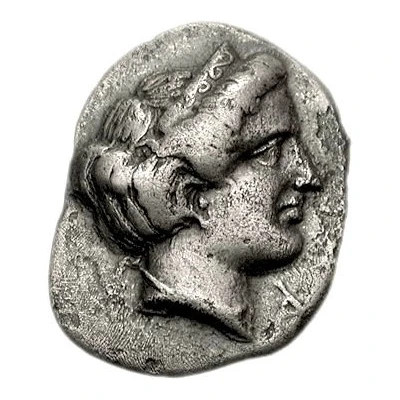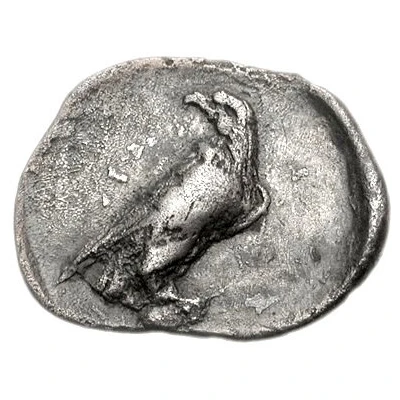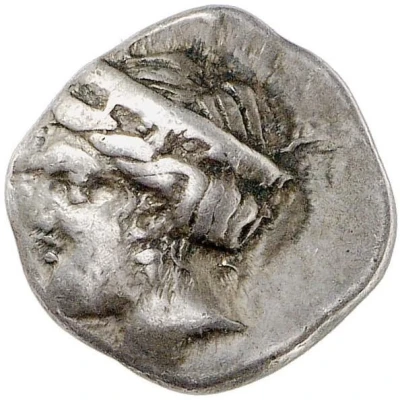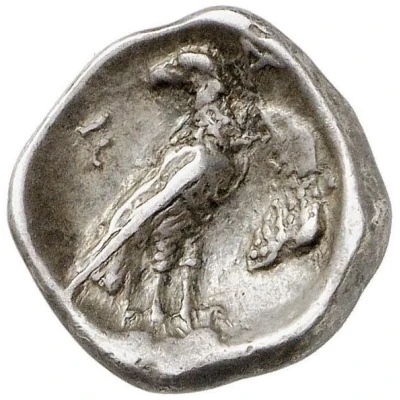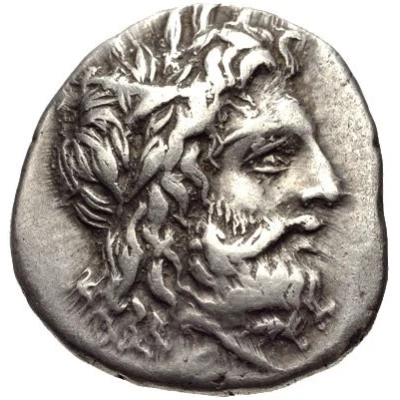
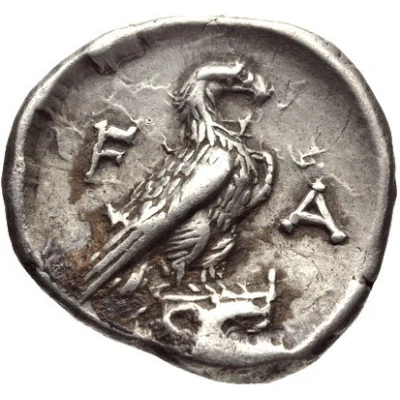

© Classical Numismatic Group, Inc.
Hemidrachm - 107th-108th Olympiad 352 BC - 348 BC
| Silver | 2.78 g | 14.0 mm |
| Issuer | Olympia (Elis) |
|---|---|
| Type | Standard circulation coin |
| Years | 352 BC - 348 BC |
| Value | Hemidrachm (½) |
| Currency | Drachm |
| Composition | Silver |
| Weight | 2.78 g |
| Diameter | 14.0 mm |
| Shape | Round (irregular) |
| Technique | Hammered |
| Demonetized | Yes |
| Updated | 2024-10-10 |
| Numista | N#177588 |
|---|---|
| Rarity index | 100% |
Reverse
Eagle standing right on Ionic column capital. F-A across field
Script: Greek
Lettering: F A
Interesting fact
The Hemidrachm coin was used as a form of currency in ancient Greece during the 4th century BC. The coin features an image of Zeus on one side and an eagle on the other. It was made of silver and weighed approximately 2.78 grams. The Hemidrachm was a widely used denomination and was accepted as legal tender throughout the ancient Greek world. It was also used as a standard unit of accounting and was often used to pay taxes and debts. Interestingly, the Hemidrachm coin was not only used for financial transactions but also had cultural and religious significance. In ancient Greece, coins were often used as offerings to the gods, and the Hemidrachm was no exception. It was believed to have been used as an offering to Zeus, the king of the gods, and was often placed in the mouths of the dead as a payment for the ferryman Charon to ensure safe passage to the afterlife. Overall, the Hemidrachm coin is an important piece of history that provides insight into the economic, cultural, and religious practices of ancient Greece.
Price
| Date | Mintage | VG | F | VF | XF | AU | UNC |
|---|---|---|---|---|---|---|---|
| ND (352 BC - 348 BC) | - | - | - | - | - | - |
Values in the table are based on evaluations by sales realized on Internet platforms. They serve as an indication only for Hemidrachm - 107th-108th Olympiad (352 BC - 348 BC) coin.
